'Yolocaust': How should you behave at a Holocaust memorial?
- Published
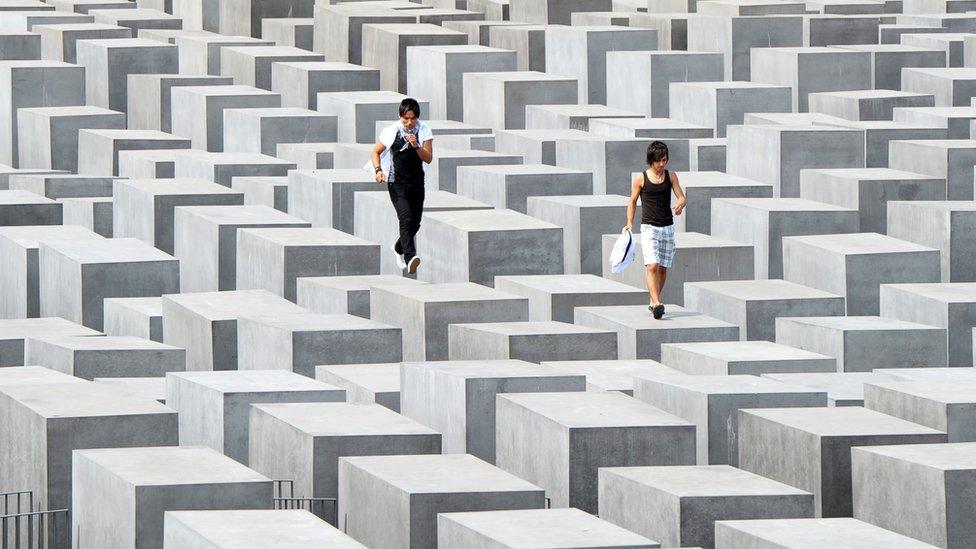
Two visitors run on the pillars at the Berlin Holocaust memorial
Warning: This article contains images that readers might find disturbing.
At first glance, the selfies are perfectly ordinary. They have hashtags; they have emojis (star, smiley face, loveheart); they feature a variety of athletic poses.
One man is juggling six pink balls. A woman strikes a yoga pose, another stands on one leg, two men leap from one pillar to another.
But Shahak Shapira, an Israeli-German writer, took issue with the setting: the Berlin Holocaust memorial. Mr Shapira copied 12 selfies taken at the memorial from social media and published them on a website on Thursday.
And Mr Shapira's trick was to design the website so that hovering over the images strips away the background of the memorial and replaces it with scenes from concentration camps, leaving the unwitting young selfie-takers suddenly surrounded by emaciated bodies and corpses.
The website is called "Yolocaust", a combination of the popular social media hashtag Yolo - "you only live once" - and Holocaust. It was a hit online and was picked up by a handful of news outlets that praised the idea as "powerful" and "stinging", and called the people in the images "foolish", "disrespectful", and "dumb-ass selfie-takers".
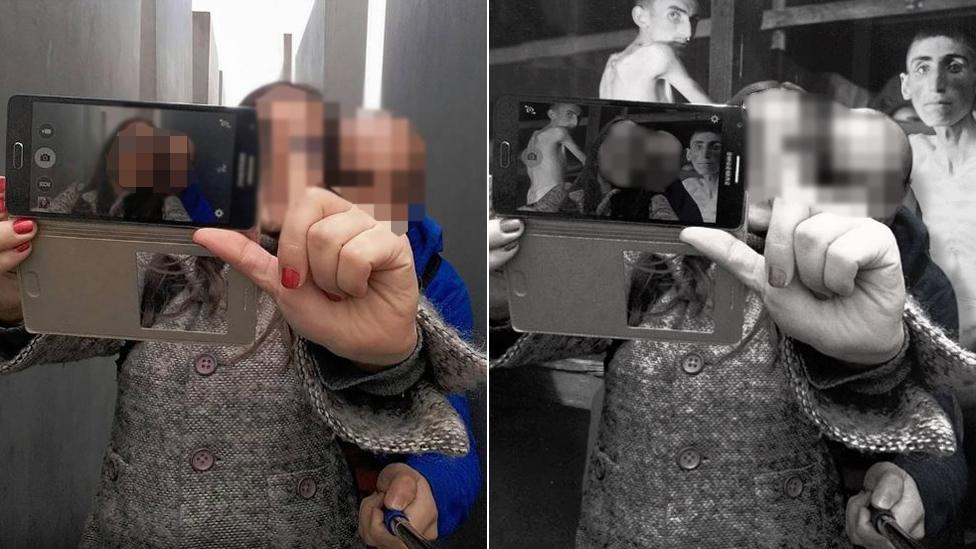
One of the images created by Mr Shapira. Many contained more graphic scenes of corpses
Mr Shapira had been thinking about the idea for about a year before he started work on Wednesday, he said.
"It's a phenomenon I had begun to notice in Berlin and then I started seeing those pictures everywhere. I felt like people needed to know what they were actually doing, or how others might interpret what they were doing."
So he scanned through thousands of selfies on Facebook, Instagram, Tinder, and Grindr and settled on a dozen of the most extreme.
The images were all on public social media accounts and he didn't seek permission from any of the account holders. At the bottom of the site is an email address - "undouche.me@yolocaust.de" - to request that an image be removed. "I guess that's my compromise," Mr Shapira said.
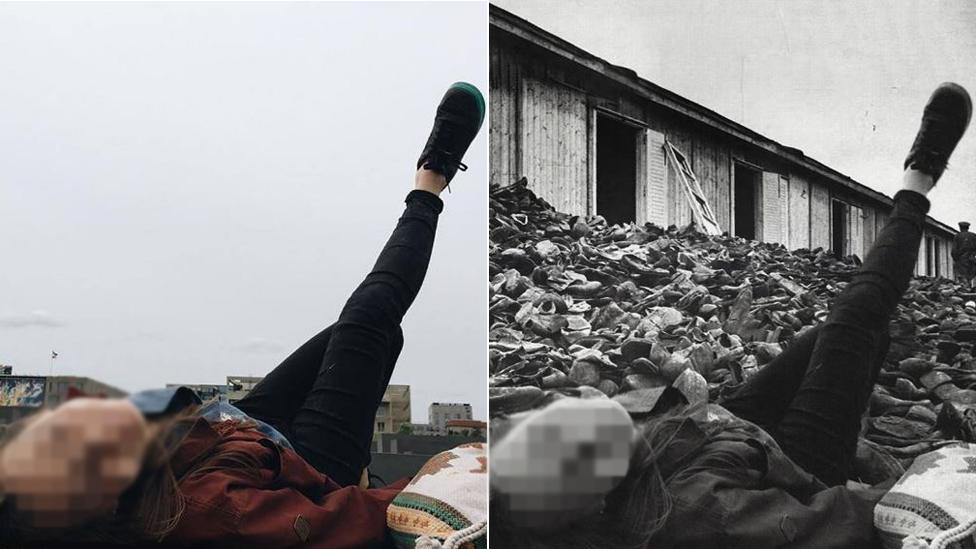
Another of Mr Shapira's composites, alongside the original
The thing that makes the project provocative is "the people and the way they present themselves," rather than the shocking death scenes he has superimposed, he said.
"If I had used normal selfies, with people standing there doing nothing, I don't think it would have been provocative," he said. "The controversy comes from the actions of the people. I'm just changing the scenery."
'Not sacred ground'
In 2014, Breanna Mitchell, an American teenager, posted a selfie on Twitter. "Selfie in the Auschwitz Concentration Camp," she wrote, adding a blushing smiley face emoji.
A month later someone spotted her tweet and retweeted it, and within hours it had generated a backlash which spread from Twitter to traffic-hungry news sites to her mobile phone, which lit up with abuse and even death threats from people who had obtained her number, she said.
Ms Mitchell joined a growing number of people who had made arguably ill-judged social media posts and were dealt an online public shaming in return. Her picture generated a debate about appropriate behaviour at memorial sites.
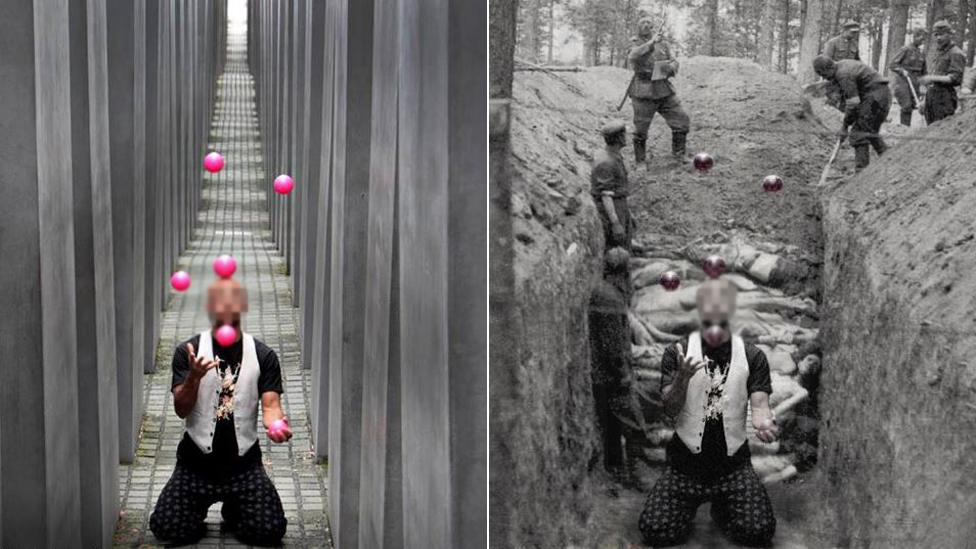
The juggler featured on Mr Shapira's site
Karen Pollock is the chief executive of the London-based Holocaust Education Trust, which works with teachers and young people to prepare them for visits to Auschwitz and other Holocaust memorials.
"We talk with young people about the right way to be and act at a site of mass murder - how to behave, what to do with a camera," she said.
She called the Yolocaust images "powerful" and said she welcomed a debate about the issue, "but we would not want to chastise younger visitors for experiencing things in a different way to people of an earlier generation", she added.
"The generation of today is one that experiences a great deal through the lens of a phone, and it's not about chastising, exposing, or humiliating them. We try to have challenging conversations about what they want from a picture in that setting.
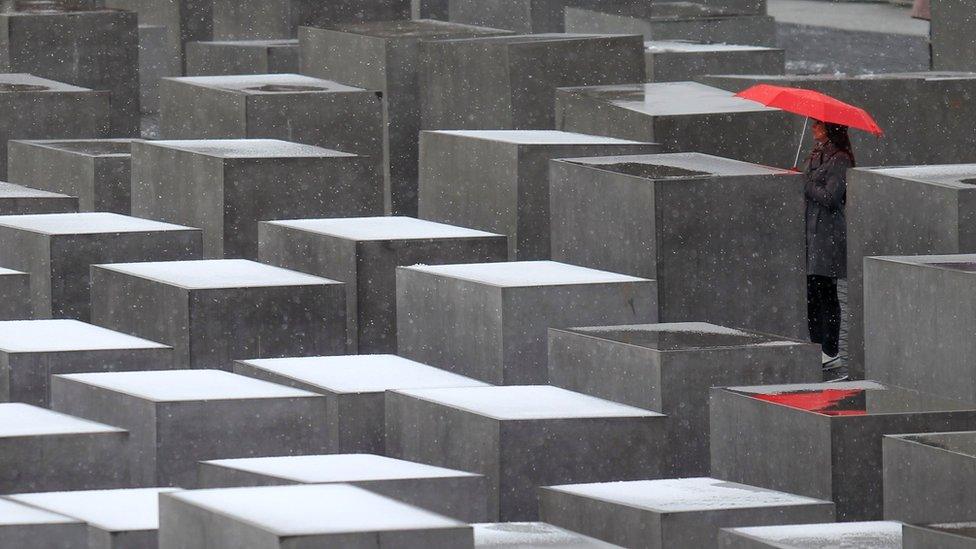
A woman stands with a red umbrella at Berlin Holocaust memorial
"When I looked at the pictures I didn't think gosh aren't these people terrible, I thought these are young people who have different experiences to previous generations."
And the man who designed the memorial agreed. Peter Eisenman, a New York architect, saw the Yolocaust site soon after it was published on Thursday.
"To be honest with you I thought it was terrible," he said. "People have been jumping around on those pillars forever. They've been sunbathing, they've been having lunch there and I think that's fine.
"It's like a catholic church, it's a meeting place, children run around, they sell trinkets. A memorial is an everyday occurrence, it is not sacred ground."
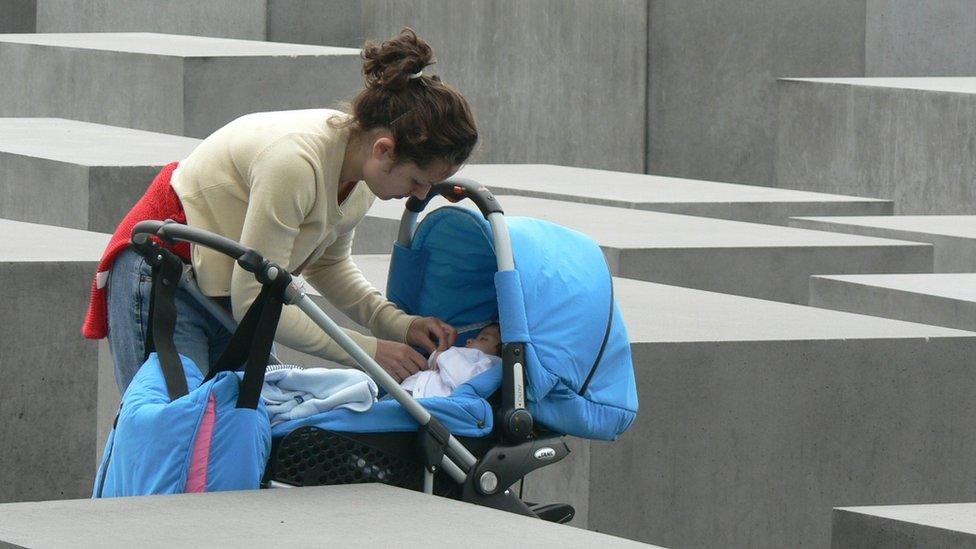
A woman tends to a baby at the memorial
Mr Eisenman drew a clear distinction between the Berlin memorial and burial sites such as Auschwitz, which he said was "a different environment, absolutely".
"But there are no dead people under my memorial. My idea was to allow as many people of different generations, in their own ways, to deal or not to deal with being in that place. And if they want to lark around I think that's fine.
"But putting those bodies there, in the pictures, that's a little much if you ask me. It isn't a burial ground, there are no people under there."
'Monument of shame'
On Wednesday, as Mr Shapira was preparing to hit publish on his website, German far-right politician Bjoern Hoecke addressed a beer hall full of supporters in Dresden.
Referring to the Berlin memorial, he accused Germans of being "the only people in the world to plant a monument of shame in the heart of its capital" and called for a "180 degree turn" in Holocaust remembrance.
The timing was a coincidence, according to Mr Shapira, but he said his project was motivated in part by concern over a trend in European and US politics which he saw as a threat to the lessons of the Holocaust.
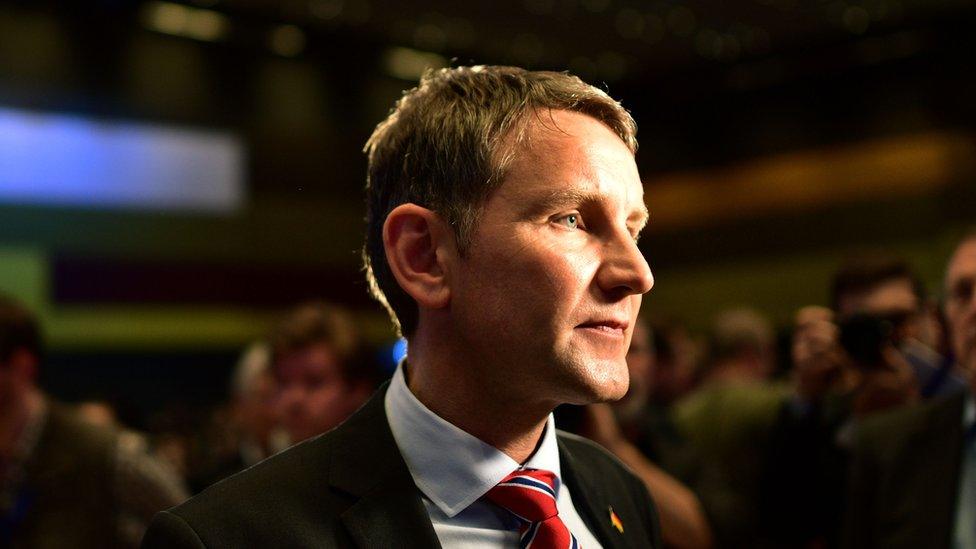
Bjoern Hoecke's comments sparked outrage in Germany
"I hear a lot of young people saying that they don't feel guilty and they don't want to feel guilty, and they shouldn't, it's not their fault and it's not their responsibility, but what is their responsibility is what's going on right now in Germany.
"I am worried that younger people fail to understand the importance of these memorials. They're not there for me - for Jews - or for the victims, they are there for the people of today, for their moral compass. So they know not to elect the guys with the Hitler haircuts, because we could end up right where we were 80 years ago."
So far one person has emailed to request that his picture be taken down, and Mr Shapira said the young man expressed regret over his pose. But the rest of the images will remain on the site and Mr Shapira may expand his project.
"Lets see what happens, let's see how many stupid, inappropriate pictures I have to see on the internet," he said.
"And if you're asking me is this right or wrong, then that's a good thing. It doesn't have to be one or the other, just having the debate is good."